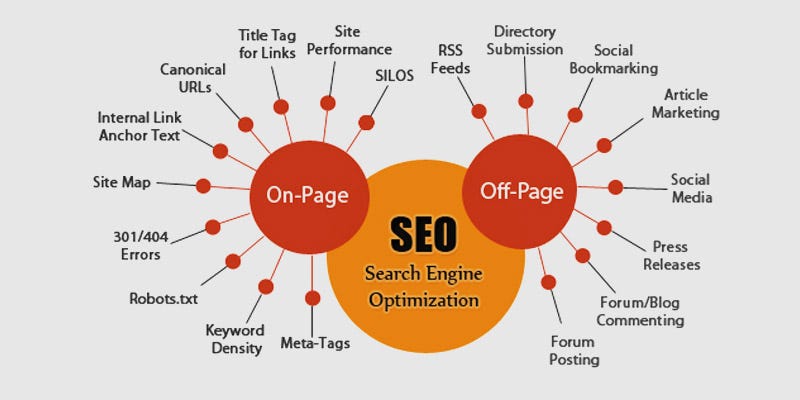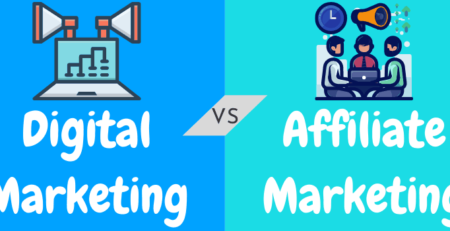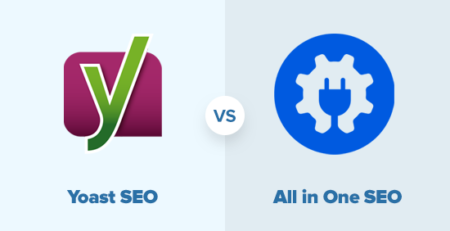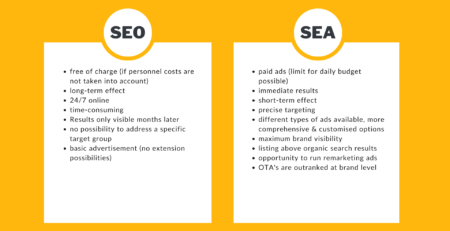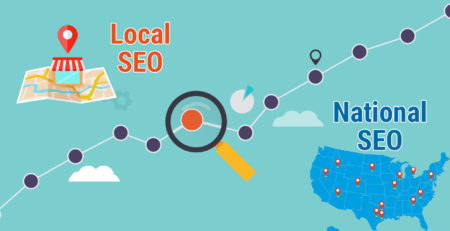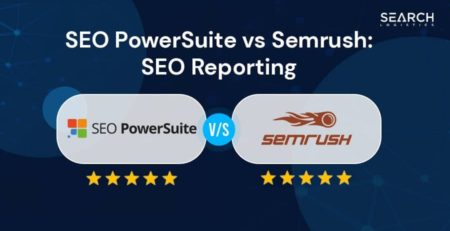On Site Seo Vs Offsite Seo: Get The Main Difference In 2023
When it comes to improving your website’s visibility and ranking on search engines, two strategies play a critical role: on-site SEO and off-site SEO. These strategies involve optimizing different aspects of your website and online presence to attract more organic traffic. Let’s dive into the world of on-site SEO versus off-site SEO and explore their unique benefits and differences.
First, let’s explore on-site SEO. This strategy focuses on optimizing various elements directly on your website, such as meta tags, keyword placement, internal linking, and website structure. On-site SEO ensures that your website is user-friendly, relevant, and easily understood by search engines. By implementing on-site SEO techniques, you can improve your website’s visibility and rankings in organic search results.
Now, let’s turn our attention to off-site SEO. Unlike on-site SEO, off-site SEO involves actions taken outside of your website to improve its visibility. This includes building high-quality backlinks from reputable websites, social media engagement, guest blogging, and online reputation management. Off-site SEO helps search engines understand your website’s authority and popularity within your industry, ultimately boosting your rankings.
So, whether you’re new to the world of SEO or looking for ways to enhance your website’s performance, understanding the differences between on-site SEO and off-site SEO is crucial. By leveraging the power of both strategies, you can maximize your chances of ranking higher in search engine results and reaching your target audience effectively. Let’s dive deeper into on-site SEO and off-site SEO techniques and explore how they work together to optimize your online presence.
When it comes to optimizing your website for search engines, there are two main strategies: On-Site SEO and Off-Site SEO. Both play important roles in improving your website’s visibility and ranking. On-Site SEO focuses on optimizing elements within your website, such as meta tags and keyword placement. Off-Site SEO, on the other hand, involves building backlinks and promoting your website through other channels. By utilizing both strategies effectively, you can maximize your online presence and attract more organic traffic to your site.
Key Takeaways: On-Site SEO vs. Off-Site SEO
- On-site SEO focuses on optimizing your website’s content and structure.
- Off-site SEO involves building external links and improving your site’s reputation.
- Keywords play a crucial role in both on-site and off-site SEO.
- On-site SEO includes actions like optimizing meta tags and improving page load speed.
- Off-site SEO involves activities like guest blogging and social media marketing.
Comparing On-Site SEO vs Off-Site SEO
In the world of Search Engine Optimization (SEO), there are two key approaches to optimizing your website for search engines and driving organic traffic: On-Site SEO and Off-Site SEO. Both strategies play a crucial role in improving your website’s visibility and rankings on search engine result pages (SERPs). In this article, we will delve into the details of these two SEO techniques and explore their key features, user experience, pros and cons, price points, and ultimately determine which one is better for your website’s SEO.
Overview of On-Site SEO
On-Site SEO, also known as on-page SEO, refers to the optimization techniques that are implemented directly on your website to improve its search engine visibility. It involves optimizing various elements within your website, including the content, HTML source code, and website structure, to make it more relevant and accessible to search engines.
One of the primary focuses of On-Site SEO is keyword optimization. This entails conducting keyword research and strategically incorporating relevant keywords into your website’s content, meta tags, URLs, and internal links. By doing so, search engines can better understand the context and relevance of your web pages to specific search queries.
In addition to keyword optimization, On-Site SEO also involves optimizing other technical aspects of your website, such as improving page load speed, implementing proper header tags, optimizing images, and ensuring mobile-friendliness. All these optimizations contribute to a better user experience and higher search engine rankings.
Overview of Off-Site SEO
Off-Site SEO, also known as off-page SEO, refers to the optimization techniques that are executed outside of your website to improve its search engine rankings. Unlike On-Site SEO, which focuses on optimizing the internal elements, Off-Site SEO emphasizes building a strong online reputation and authority for your website through external factors.
One of the primary components of Off-Site SEO is link building. This involves acquiring high-quality backlinks from other reputable websites to your own. Backlinks serve as an endorsement of your website’s credibility and relevance to search engines. The more high-quality backlinks your website has, the higher it is likely to rank on search engine result pages.
In addition to link building, Off-Site SEO also involves other activities such as social media marketing, influencer outreach, content promotion, and online reputation management. These strategies help increase your website’s visibility, brand awareness, and overall authority in the online space.
Key Features Compared: On-Site SEO vs Off-Site SEO
When comparing On-Site SEO and Off-Site SEO, it is essential to understand the key features and differences between the two techniques. Let’s explore these features in more detail.
Keyword Optimization
In terms of keyword optimization, On-Site SEO allows you to have full control over the keywords you want to target. You can strategically incorporate relevant keywords into your website’s content, meta tags, and URLs. This helps search engines understand the context and relevance of your web pages.
On the other hand, Off-Site SEO does not directly involve keyword optimization. Instead, it relies on the anchor text used in backlinks to determine the relevance of your website to specific keywords. While you don’t have direct control over the anchor text used by other websites, you can still influence it through your link building efforts.
User Experience
Both On-Site SEO and Off-Site SEO play a role in improving the user experience of your website.
On-Site SEO focuses on optimizing technical aspects of your website, such as page load speed, mobile-friendliness, and responsive design. By ensuring a fast and user-friendly website, you provide a positive browsing experience for your visitors, leading to lower bounce rates and higher engagement.
Off-Site SEO indirectly contributes to user experience by helping increase your website’s credibility and reputation. When other reputable websites link to your content, it signals to users that your website is trustworthy and valuable. This can lead to higher click-through rates and longer browsing sessions.
Authority and Credibility
Both On-Site SEO and Off-Site SEO have an impact on your website’s authority and credibility.
On-Site SEO helps establish your website’s authority by optimizing the content and structure of your website. Search engines recognize the relevance and quality of your content, which can positively impact your rankings.
Off-Site SEO, particularly through link building, helps build your website’s credibility by earning backlinks from other reputable websites. Each high-quality backlink is seen as a vote of confidence from other sites, indicating that your content is valuable and reliable.
User Experience
When it comes to user experience, both On-Site SEO and Off-Site SEO contribute to creating a positive and engaging experience for website visitors.
On-Site SEO focuses on optimizing the technical aspects of your website to ensure fast loading times, easy navigation, and mobile responsiveness. This helps visitors quickly find the information they’re looking for, leading to a better user experience and increased engagement.
Off-Site SEO indirectly influences user experience by improving your website’s credibility and authority. When your website receives backlinks from reputable sources, it enhances user trust, encouraging them to spend more time exploring your content.
In summary, both On-Site SEO and Off-Site SEO are essential for providing a seamless and enjoyable user experience on your website. While On-Site SEO directly optimizes the technical aspects, Off-Site SEO enhances credibility and authority, improving user trust and engagement.
Pros and Cons
On-Site SEO Pros:
- Full control over keyword optimization
- Allows for easy website updates and adjustments
- Improves website accessibility and user experience
On-Site SEO Cons:
- Results may take longer to achieve
- Limited impact without off-site factors
- Requires continuous monitoring and optimization
Off-Site SEO Pros:
- Enhances website credibility and authority
- Increases organic traffic through external referrals
- Can result in faster rankings improvement
Off-Site SEO Cons:
- Less direct control over backlinks
- Requires ongoing effort and relationship building
- Backlink quality and relevance are crucial for success
Price Comparison
When comparing the price points of On-Site SEO and Off-Site SEO, it’s important to note that the costs can vary widely depending on various factors, including the size of your website, the competitiveness of your industry, and the specific services you require.
For On-Site SEO, the costs primarily involve hiring an SEO professional or agency to conduct an in-depth website audit, keyword research, and provide recommendations for optimizing your website’s content, structure, and technical aspects. The pricing can range from a few hundred dollars for smaller websites to several thousand dollars for larger, more complex sites.
On the other hand, the costs of Off-Site SEO primarily revolve around link building and content promotion efforts. This may include expenses for outreach campaigns, content creation, and relationship building. It’s important to allocate a budget for acquiring high-quality backlinks from reputable websites, as this can be a significant factor in improving your search engine rankings. The costs for Off-Site SEO can also vary greatly depending on the scale of your link building campaigns and the industry you’re in.
Ultimately, the investment in both On-Site SEO and Off-Site SEO is necessary for a comprehensive SEO strategy. It’s essential to assess your website’s specific needs and allocate your budget accordingly.
Comparison Table: On-Site SEO vs Off-Site SEO
| Feature | On-Site SEO | Off-Site SEO |
|---|---|---|
| Keyword Optimization | Direct control over keyword usage within website content | Keyword relevance influenced through backlink anchor text |
| User Experience | Optimizes website structure and technical aspects for better user experience | Enhances credibility and reputation, indirectly improving user trust |
| Authority and Credibility | Optimizes content to establish website authority | Builds credibility through high-quality backlinks from reputable sources |
Which is Better: On-Site SEO or Off-Site SEO?
Both On-Site SEO and Off-Site SEO are crucial components of a comprehensive SEO strategy. The better approach for your website depends on various factors, including your specific goals, industry competitiveness, and available resources.
However, if we had to choose a winner, On-Site SEO holds a slight advantage due to its direct control over the optimization process and the impact it has on the overall user experience. By focusing on improving your website’s technical aspects, ensuring keyword optimization, and providing a seamless user experience, you lay a strong foundation for better search engine rankings and organic traffic.
Here are three reasons why On-Site SEO is the preferred option:
- Full Control: Unlike Off-Site SEO, where you have limited control over external factors, On-Site SEO gives you full control over the optimization process. You can easily update and adjust your website’s content and technical aspects to align with the latest SEO best practices.
- User Experience: With On-Site SEO, you can prioritize creating a user-friendly website that delivers a positive experience to your visitors. By focusing on elements such as page load speed, mobile-friendliness, and relevant content, you can improve engagement, lower bounce rates, and increase conversions.
- Long-Term Impact: On-Site SEO lays the foundation for long-term success. By consistently optimizing your website’s content and technical aspects, you build a strong online presence that attracts organic traffic and increases your website’s authority in the eyes of search engines.
While Off-Site SEO certainly has its merits, prioritizing On-Site SEO is a wise decision to set your website up for success in the long run.
Frequently Asked Questions
Looking to boost your website’s visibility and rank higher on search engines? Understanding the difference between on-site SEO and off-site SEO is crucial. Here are some common questions about on-site SEO and off-site SEO:
1. How does on-site SEO differ from off-site SEO?
On-site SEO refers to the optimization techniques implemented directly on your website to improve its search engine rankings. This includes optimizing web pages, meta tags, URLs, and internal linking structure. Off-site SEO, on the other hand, involves activities outside of your website that impact your online visibility, such as building high-quality backlinks and social media promotion.
In summary, on-site SEO focuses on optimizing your website’s structure and content, while off-site SEO focuses on building external signals, such as backlinks, to your website.
2. Which one is more important: on-site SEO or off-site SEO?
Both on-site SEO and off-site SEO are essential for a comprehensive SEO strategy. However, if you’re just starting, it’s generally recommended to prioritize on-site SEO. By ensuring your website is optimized, you create a solid foundation to attract and engage visitors. Once your on-site SEO is in order, you can gradually shift your focus towards off-site SEO to build authority and increase your online presence through link building and other promotional activities.
Remember, a well-balanced approach that combines both on-site and off-site SEO is key to achieving sustainable and long-term organic search visibility.
3. How can I improve my on-site SEO?
To enhance your on-site SEO, start with keyword research to identify relevant keywords for your website’s content. Then, optimize your page titles, meta descriptions, and header tags to include these keywords. Ensure your website loads quickly, has a user-friendly interface, and is mobile-friendly. Create valuable and relevant content with proper formatting, including images and videos. Lastly, optimize your URLs, internal linking structure, and sitemap to provide a seamless user experience and easy navigation.
Regularly monitoring and updating your on-site SEO efforts based on performance and analytics will help you maintain and improve your website’s search engine rankings over time.
4. How can I improve my off-site SEO?
Improving your off-site SEO involves building high-quality backlinks from reputable and relevant websites. This can be done through various strategies such as guest blogging, creating shareable content, and reaching out to influencers or industry experts for collaborations or partnerships. Utilizing social media platforms and engaging with your audience can also boost your off-site SEO by increasing brand visibility and driving traffic to your website. Additionally, online directories and review sites can provide valuable backlink opportunities. Remember to focus on obtaining natural, organic backlinks rather than resorting to spammy or black-hat techniques.
Consistency, persistence, and providing value to your target audience are key factors in improving your off-site SEO and building a strong online presence.
5. Can I focus on either on-site SEO or off-site SEO alone?
While both on-site SEO and off-site SEO are important, it’s generally recommended to have a balanced approach and work on both aspects simultaneously. On-site SEO ensures your website is well-optimized to attract and engage visitors, while off-site SEO helps build credibility, authority, and visibility. Ignoring one aspect in favor of the other may limit the overall effectiveness of your SEO efforts. A comprehensive strategy that encompasses both on-site and off-site SEO will yield the best results in the long run.
Remember, SEO is an ongoing process, and continuously improving both on-site and off-site aspects will help you stay ahead of the competition and achieve sustainable organic search visibility.
On-Page vs. Off-Page SEO: What’s the Difference? – Types of SEO
Summary
So, now you know the difference between on-site SEO and off-site SEO. On-site SEO is all about making your website better, like using the right keywords and having good content. Off-site SEO, on the other hand, is about getting other websites to talk about your website and link to it.
Remember, on-site SEO helps search engines understand what your website is about, while off-site SEO is like a popularity contest. Both are important for making your website more visible and getting more people to visit it. It’s like having a great shop with awesome things inside and then telling everyone about it!
By paying attention to both on-site and off-site SEO, you can get your website to show up higher in search results and attract more visitors. So, next time you’re working on your website or writing a blog post, think about how you can use these two types of SEO to make it even better.
Now go out there, be creative, and make your website shine! Happy optimizing!

